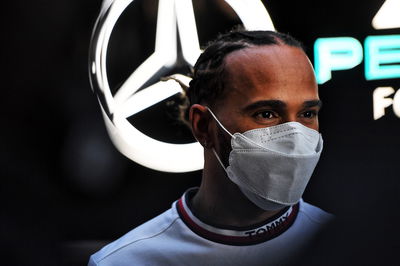What we learned from F1’s opening pre-season test

After three days of running - the equivalent of 24 hours of track time - Formula 1’s opening pre-season test has drawn to a close.
A major overhaul to F1’s technical regulations has teased the tantalising prospect of a potential reset to the competitive order, leaving a real sense of excitement that this season could end up being a wide-open contest.
Yet it was Mercedes, the team which has dominated F1 since the sport’s last big rules shake-up in 2014, who locked out the timing sheets at the end of the first test.
Indeed, it is very early days in the 2022 season and F1’s new era, making it difficult to draw any solid conclusions, but Barcelona at least provided an initial impression as to which teams have started well, and which still have some work to do.
Who looks good?
Mercedes grabbed the headlines on the final day of running as Lewis Hamilton unleashed late pace on the C5 compounds to produce a 1m19.138s and put himself 0.095s clear of teammate George Russell.
The German manufacturer had a quiet start to the opening test but provided a glimpse of the potential of its W13 with runs on Pirelli’s softest available compound on Friday. Mercedes’ 2022 challenger completed the second-highest amount of laps with 393.
But seven-time world champion Hamilton admitted Mercedes has had to overcome “obstacles” this week. As well as suggesting that not everything had been plain sailing for the reigning world champions, Hamilton was quick to downplay his pace.
Asked if he had an idea of where Mercedes stands, Hamilton said: “You never do on the first week, you never do. We have no idea where everyone is.”
Teammate Russell also wanted not to take the lap times too seriously. It can be easy to get wrapped up in the times but they are fairly irrelevant given that key parameters such as fuel loads, engine settings, and how much the driver is pushing, are unknown.
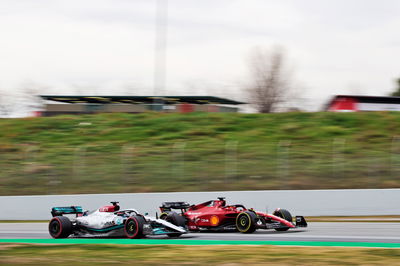
"Lap time-wise, I don't think it's representative at all,” Russell said.
"Even though we are top of the timesheets, I wouldn't read too much into it. We have some improvements to make, as we're not fully happy with the balance of the car and the limitations we have currently.
“But we have a good indication of the direction we need to go in.”
And Russell was keen to point out that it had been a strong opening test for former F1 powerhouses Ferrari and McLaren. Both teams spent spells at the top of the order on Wednesday and Thursday and logged impressive mileage.
Ferrari’s combined haul of 439 was the most of any team, while McLaren slotted into third with 367, just over 20 laps shy of Mercedes.
Despite McLaren's hugely positive start, Lando Norris, who topped the first day, is convinced Mercedes and Red Bull will still be the teams to beat when the season gets underway in Bahrain on March 20.

“I think if there’s any team on the grid right now that you expect to be at the front when it matters it’s going to be Mercedes and probably Red Bull,” he explained.
“I don’t think we’re in an amazing place. I think we’re in a good place. We had a car which as soon as we put it on the track worked well and of course, there’s always some new things and some unexpected issues here and there, but it’s been a good start.”
While Hamilton may have completed a late ‘glory’ run, Red Bull appears in no rush to show its hand. Sergio Perez and reigning world champion Max Verstappen ended up 3-4 behind Mercedes and set their quickest laps on harder tyres.
The Milton Keynes squad turned heads when the RB18 - featuring an extremely aggressive aerodynamic package - broke cover in public for the first time on Wednesday.
But the team went quietly about its business and racked up plenty of miles. Red Bull’s total lap count only took a hit when Perez lost running on the second morning when he pulled over with a gearbox issue to bring out the first red flag of testing.
“What is positive is that the car is running smoothly,” summarised Verstappen. “I don’t pay attention to the lap times just yet, I will look into that when we get into Q3 in Bahrain.
“I just focus on doing a lot of laps and nailing down every single aspect of the car. I have really enjoyed driving the RB18 this week, it has a nice stable balance.”
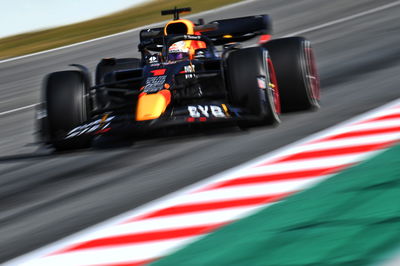
Who has work to do?
Alfa Romeo and Haas certainly look on the back foot heading into the second test in Bahrain, with both being plagued by issues across all three days in Spain.
The former’s has in part been linked to the phenomenon known as ‘porpoising’, something that has returned to F1 with the move to ground-effect technology. It is a problem that occurs when the airflow under the car is disrupted when travelling above a certain speed on the straights, resulting in a bizarre and dramatic bouncing effect that lurches the car up and down.
Porpoising is a problem because it leads to a loss of downforce and can cause instability. It has been highlighted by a number of drivers as being a potential safety concern, particularly in high-speed corners, and is something almost all of the teams have struggled with at some stage throughout the opening test.
"We're doing 300km/h and jumping 30-40mm up and down,” said Ferrari’s Carlos Sainz. “It’s annoying. Hopefully it's resolved and it's not something we need to live with because it's quite on the limit.
"You have to trust the engineers that it is going to keep getting better as we learn the ground-effect cars.”
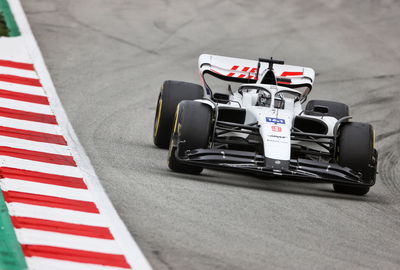
Guanyu Zhou triggered two red flags on Friday morning, while fellow new Alfa Romeo signing Valtteri Bottas only managed a handful of laps in the afternoon before he failed to re-emerge with an unspecified issue.
Alfa Romeo and Haas completed the fewest laps altogether, with 175 and 160 respectively.
American-owned Haas, whose week was overshadowed by a difficult sponsor and driver saga in the wake of Russia’s invasion of Ukraine, suffered multiple gremlins that kept Mick Schumacher and Nikita Mazepin garage-bound for long periods, including the whole of Friday afternoon.
Alpine and Aston Martin also faced a premature end to the test after Fernando Alonso and Sebastian Vettel each came to a fiery stop on track. Alpine traced Alonso’s issue down to a hydraulics problem, while Vettel’s stoppage was the result of an oil leak.
It was a frustrating end to the first test for Alpine given it has high hopes of moving closer to the front of the grid in 2022.
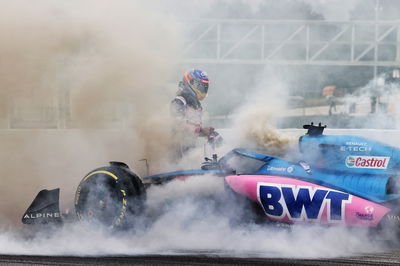
Will F1's new cars make racing better?
From an aesthetics standpoint, F1’s latest-generation cars have gone down a storm with drivers and fans alike.
But the main reason the rules were introduced was to improve racing. So has that been achieved?
Many drivers reported the regulations have successfully made it easier to follow a car ahead, including Ferrari duo Charles Leclerc and Carlos Sainz, and Verstappen, who was encouraged by his early experiences in Barcelona.
"I've been following a few cars, and it seems like it's a little bit easier to stay behind," the Red Bull driver said.
"At least you don't have this weird loss of downforce where suddenly you have a lot of understeer or massive oversteer.
“Of course, I don't expect it to be fully gone and that you can follow on the rear diffuser, because of the speeds we're still doing in an F1 car, but it all seems a bit more under control. The cars are fine."
However, some appear to remain skeptical about how good the on-track spectacle will be.
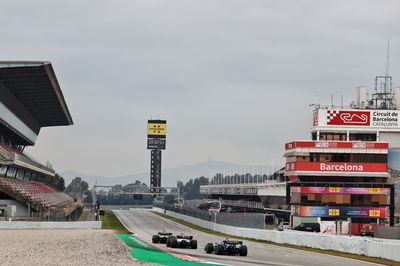
Russell noted that while following may be easier, overtaking could actually prove to be harder because of a less effective slipstream.
“I think the following has been improved but the slipstream effect has been reduced quite substantially, so I don't really know,” he said.
“You obviously need that delta in the straights to overtake because you can only overtake at the end of a straight and into a corner. We can follow closer but from what we have seen, the slipstream effect is definitely less effective.
“We will have to wait and see. I got right up behind Lando, I was a car-length or two behind him and didn't catch him on the straight, so that was slightly concerning so let's see.”
Norris added: “The following in the corner is an improvement. We can follow closer but then the slipstream is worse.
“So a positive and a negative from it. We don't know which is the bigger effect at the minute, so we will have to see until the first race.”
